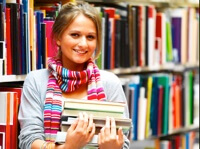Slovakia – My Homeland essay
Typ práce: Maturita
Jazyk:
Počet zobrazení: 6 843
Uložení: 173
1. SLOVAKIA - MY HOMELAND
Slovensko – moja vlasť
Popísať: - krajinu a obyvateľov
- miesta, ktoré by som odporučil študentom
- zvyky, tradície, konvencie
LOCATION - umiestnenie
Slovakia is situated in the centre of Europe. We can say, it is in the heart of Europe. Slovakia is not a large country. Its area is about 49000 square kilometres and almost six million people live there.
Slovakia is surrounded by Czech Republic, Poland, Ukraine, Hungary and Austria.
INDUSTRY and AGRICULTURE - priemysel a poľnohospodárstvo
Agriculture has always been very important for Slovak region. People in Slovakia grow potatoes, sugar beets and corn and almost everyone who has a garden plants fruit trees and vegetables. In Pezinok and Modra people usually grow grape-wine. Animal production is important too. People keep cows, goats, hens in hen farms, pigs, and sheep.
For Slovak economy, car factories are the most important, because more than 200 000 people work there. Many areas of industry are situated in the west of Slovakia so there are a lot of people in the eastern regions who must travel to work.
SOME IMPORTANT HISTORICAL POINTS - dôležité body v minulosti
In 863 Cyril and Methodius came from Solon and they brought the Christianity to Slavic regions. They also created the Slavic script.
At the beginning of the 10th century when the Great Moravia ended, the area of Slovakia became the part of the Hungarian, then Austro-Hungarian monarchy until the First World War. Since 1787 Slovak language has been modified.
In 1918 when the war ended, Czech and Slovak nations united in Czechoslovak republic to avoid German and Hungarian occupancy. Later in 1938 the first Slovak State was established as a satellite country of Nazi Germany until 1945 when Czech Republic and Slovakia united again.
After Second World War, European countries were separated by the Berlin wall in two parts Western and Eastern. Czechoslovakia fell into the Eastern part and became part of the Soviet Union until 1989. In 1989, there was a revolution in Czechoslovakia and the two countries were divided. Since 1st January 1993 Slovakia has been independent state.
On 1st May 2004 Slovak Republic became a member of European Union.
INTERESTING PLACES – zaujímavé miesta
There are many interesting places in Slovakia.
Mountains – Tatra Mountains: The High Tatras, The Low Tatras.
Old towns/villages - Vlkolínec, Čičmany, Vychylovka, Rajecká Lesná.
Caves - The Dobšinská Ice Cave, Belianska Cave, Domanica.
Castles - Devín Castle, Bratislava Castle, Bojnice Castle.
Spa and baths - Piešťany, Bardejov, Bojnice, Rajecké Teplice.
MOUNTAINS - hory
Slovak country is full of mountains. In the north there are the High Tatras with the highest peak Gerlach. It is not easy for hiking so people need an instructor.
The Low Tatras. They are not as high as the High Tatras but the nature there is beautiful and it is an ideal place for hiking. The most popular peaks in the Low Tatras are Ďumbier, Zvolen, Chopok and Kráľová Hoľa.
In the west there are for example Great Fatra, Lesser Fatra, White Carpathian Mountains, and Lesser Carpathian Mountains.
In the east part of central Slovakia there are also national parks called the Slovak Paradise and the Slovak Karst.
SLOVAK HOLIDAY –
slovenská dovolenka
Slovak nature is very beautiful. People go hiking in every season but usually in summer, whereas in winter, they usually go skiing. Tourists’ favourite ski resorts are Jasná, Valčianska Dolina, Martinské Hole, Solisko, Malino Brdo, and Ždiarska dolina.
Tourists also visit old towns and villages like Vlkolínec, Vychylovka. These places show how people lived in the past – there are old wooden houses and cottages. Vlkolínec is protected by UNESCO.
In Slovakia there are many caves – The Dobšinská Ice Cave is the largest ice cave in Europe. Other caves are the Cave of Freedom, Belianska Cave, Gombasecká.
There are also several castles in our country.
Bojnice castle is popular because of its yearly ghost festival.
Čachtice castle is known as a residence of a bloody woman Elisabeth Báthory who used to kill young women and bathe in their blood.
Other popular castles are Beckov ruins, Trenčín Castle, Bratislava Castle, Spiš Castle, Orava Castle, Strečno, Krásna Hôrka and many others.
There are many wellness centres baths and spa. Tourists usually visit Piešťany, Bardejov, Rajecká Lesná, Bojnice, Turčianske Teplice to relax. During the summer people usually visit an aquapark Tatralandia or Bešeňová.
People who come to Slovakia should also visit a historical town called Kremnica. There was a mine for gold and this town is famous for the production of golden coins.
SLOVAK CUSTOMS AND TRADITIONS - slovenské zvyky a tradície
Slovak people are ready to celebrate everything, every time and everywhere. There are so many traditional days and if there are no holidays we still have weekends.
CHRISTMAS - Vianoce
Most of Slovak people are Christians so the most celebrated holidays are Christmas. Slovak families usually get together, they visit each other, bake cakes and cook traditional meals.
They use to decorate their houses and a Christmas tree and celebrate Christmas on 24th of December. The family get together and has the Christmas dinner together. Traditional Christmas dinner for Slovak people is cabbage soup and baked carp with potato salad. After the dinner, the family opens their Christmas presents under the tree, and after that they usually watch TV or traditional Christmas movies. Christmas is a celebration of Jesus Christ’s birthday. In the evening people go to the Midnight Mass and next two days they sing carols to their neighbours.
NEW YEAR’S EVE
- Silvester
The 31st of December, the last day of the year of the year, called the Silvester, is a celebration of the end of the year. People meet with friends, watch TV or go out to have a party and have fun. At midnight while fireworks are exploding people open a bottle of champagne and wish each other love, happiness, and health during the next year.
On the 1st of January people generally sleep because of hangover.
EASTER – Veľká noc
We celebrate Easter in spring usually in April or in March. It is a Christian celebration of the rising Jesus Christ from death. Jesus suffered and died because of all the sinners’ redemption.
Another tradition during the Easter is painting the Easter eggs and bake cakes. Boys twine a whip. Then they visit girls to whip them and to pour water over them “to keep them healthy”. Nowadays girls hate this tradition because they should give boys painted eggs, chocolate, glass of alcohol or money in return.
There are many family celebrations such as birthdays, name days, and school leaving celebrations Mothers’ Day, Fathers’ Day, Children’s Day anniversaries and many others. Valentine’s Day. Also wedding parties include several traditions like Parents’ Dance, Bridal-wreath Dance, and mob capping.
In Slovakia we have these public holidays, which are connected with our history. For example:
1st January - The Day of the Establishment of Slovak Republic.
5th July - The Day of Saint Solon brothers.
29th August - The Anniversary of the Slovak National Uprising.
1st September - The Day of the Slovak Constitution.
15th September - Our Lady of Sorrows.
17th November - The Day of the fight for the freedom and democracy.
Slovak people are not very rich but they are very kind and friendly. They organize several folk festivals every year. For example in Detva or Východná. These festivals are very interesting for visitors because they can see traditional folk dance, they can listen Slovak folk songs, and they can buy traditional Slovak handmade products usually made of wood.
Bryndzové halušky are typical Slovak meal made of potatoes and cheese called Bryndza. Slovak people produce several kinds of cheese besides Bryndza, for example Oštiepok and Parenica. Slovak national hero is Juraj Jánošík who was a brigand.
BRATISLAVA
Bratislava is the capital city of Slovakia. It is situated near the Austrian border. It is also an important industrial city because there are many factories like Slovnaft, Volkswagen, Palma and many other factories. There are only about 3 % population without any work.
People who like shopping centres can do the shopping in Aupark, Polus and Eurovea, but these shopping centres are always crowded.
In Bratislava there are many historical buildings and sightseeing places:
Slovak National Theatre, Slovak National Gallery, Slovak Philharmonic Orchestra – REDUTA are places used for many social and cultural events.
There are also political buildings like Grassalkovich Palace – the President’s Palace, Primate’s Palace - there is the famous Mirror hall and Bratislava Castle.
The St. Martin’s Cathedral was really important in the past. There were crowned 11 kings and 8 queens.
Tourists in Bratislava are also interested in the building of Academia Istropolitana, the first university in Hungarian Kingdom settled by Matej Hunyadi Corvin in 15th century.
| Podobné práce | Typ práce | Rozsah | |
|---|---|---|---|
|
|
Vocabulary: Slovakia – my homeland | Referát | 285 slov |
|
|
Audionahrávka MP3: Slovakia My Homeland | Maturita | 1 291 slov |
|
|
Slovakia - My Homeland | Maturita | 514 slov |
|
|
Slovakia – my homeland | Maturita | 1 987 slov |
|
|
My Homeland – Slovakia – sloh | Ostatné | 341 slov |
|
|
Slovakia - My Homeland | Referát | 696 slov |
|
|
Slovakia - My Homeland | Maturita | 1 179 slov |
|
|
SLOVAKIA – My Homeland téma | Maturita | 592 slov |
|
|
Slovakia - My Homeland + questions | Referát | 419 slov |
|
|
Slovakia – Vypracované zadanie na VIDEO | Maturita | 9 slov |
|
|
Slovakia my country | Maturita | 3 085 slov |
|
|
Slovakia – Vypracovaná téma na VIDEO | Maturita | 9 slov |
|
|
My homeland - Slovakia | Referát | 236 slov |
|
|
Slovakia – Opis obrázku na VIDEO | Maturita | 9 slov |
|
|
Slovakia – My Homeland | Učebné poznámky | 1 401 slov |
Vyhľadaj ďalšie študentské práce pre tieto populárne kľúčové slová:
#Name day in slovakia #easter in slovakia #agriculture in czech republic #my homeland #Slovakia #essay #slovakia - my homeland #Slovak easterMaturitná skúška z angličtiny
| Ďalšie práce z rovnakej sady | Rozsah | |
|---|---|---|
|
|
Ako prebieha maturitná skúška z angličtiny? | 661 slov |
|
|
Základy anglickej výslovnosti | 117 slov |
|
|
Základy anglickej gramatiky | 4 049 slov |
|
|
Slovakia – My Homeland essay | 1 416 slov |
|
|
Society and social problems essay | 469 slov |
|
|
The countries whose language I am learning essay | 2 395 slov |
|
|
Role models essay | 987 slov |
|
|
Interests, hobbies and leisure time | 754 slov |
|
|
Young people and their world essay | 837 slov |
|
|
Mass media essay | 1 152 slov |
|
|
Education essay | 757 slov |
|
|
Communication essay | 784 slov |
|
|
Jobs and professions essay | 1 073 slov |
|
|
Travelling essay | 1 762 slov |
|
|
Healthcare essay | 1 225 slov |
|
|
Shopping and services essay | 1 129 slov |
|
|
Sports and games essay | 1 226 slov |
|
|
Culture and art essay | 1 249 slov |
|
|
Housing essay | 1 502 slov |
|
|
Books and reading | 845 slov |
|
|
Family and Relationships essay | 716 slov |
|
|
Vypracované témy z angličtiny PDF | 8 slov |
















